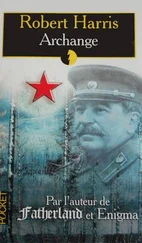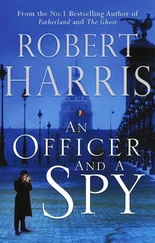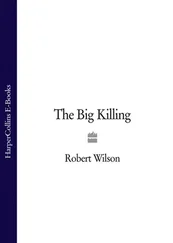At the same time there appears to have been a deliberate campaign to underestimate the number of men killed and wounded by gas, possibly by tens of thousands. Officially, 180,983 British soldiers were gassed, of whom just 6,062 were killed. However the list of categories these figures do not include is staggering. They do not include the number of men gassed in 1915 (estimated at many thousands) for which no records exist; nor any gas victims – alive or dead – captured by the enemy; nor any who may be among the quarter of a million British soldiers described as ‘missing’ in the First World War; nor any of the men who died outright on the field of battle and were later recorded as having been simply ‘killed in action’; nor any of the men with relatively minor injuries retained by the Field Ambulances until fit to rejoin their units; nor any gas casualties who later died after being evacuated to the UK; nor any casualties dying of illnesses brought on by their exposure to gas, etc, etc… One gets the impression that becoming an official gas casualty required roughly the same amount of verification as winning a medal.
Apologists for gas warfare used the statistics to argue that gas was ‘humane’, that it wounded rather than killed. Haldane attacked the ‘group of sentimentalists who appear to me definitely to be the Scribes and Pharisees of our age’ 55who made a distinction between gas and conventional weapons. It was, he argued, certainly no worse, and possibly more civilized, to kill or wound a man with chemicals rather than with shrapnel or bullets.
And what of the victims of these ‘civilized’ weapons? In Britain in 1920, 19,000 men were drawing disability pensions as a result of war gassing. 56A report drawn up by the Physiology Department of Porton in June 1927 examined a group of eighteen pensioners:
In the summer time these patients are not so bad, but with early winter, their symptoms are aggravated. These patients seldom improve, but gradually get worse… it is only a matter of time till a cardiac condition develops in addition… It should be mentioned, also, that such patients have very poor prognosis should pneumonia or other severe pulmonary conditions supervene… Some of these have chests like men of over sixty, chests definitely and permanently damaged. The evidence suggesting that Mustard is the cause appears to be conclusive. These pensioners, young and fit before the war, have a definite history of having spent some weeks or months in hospital with conjunctivitis, laryngitis, bronchitis and in some cases skin burns in addition… 57
In 1929, Porton investigated a further seventy-two cases of mustard gassing and found evidence of fibrosis, TB, persistent laryngitis, TB of the spine, anaemia, aphonia, conjunctivitis and pulmonary fibrosis. 58
These, of course, were secret reports, only declassified years later. In public, Porton maintained that the popular press ‘scaremongered’ about the long-term effects of gas poisoning. Porton physiologists sat in on Medical Boards which judged the records and examined the bodies of men laying claim to war pensions. The criteria for granting them, not surprisingly, were made exceptionally harsh. A definite causal link had to be established between disability and the actual gassing – an increased susceptibility to TB or bronchitis (though admitted) was not in itself sufficient grounds upon which to claim a pension.
Many thousands of men continued to suffer from the effects of gassing in the First World War for the rest of their lives. One survivor of a phosgene attack, Fred Cayley, 59admitted in 1980 that he had been seeing a doctor every week since 1917. [1] Mr Cayley died in July 1981 of chronic bronchitis. At a subsequent inquest he was recorded as having been ‘killed by the King’s enemies’. ‘Let this be a warning,’ added the Coroner, ‘to anyone who plans using gas or bacterial warfare. This man suffered for more than sixty years as the result of First World War gassing.’
Britain was still awarding pensions to gas victims in the 1980s. How many have never claimed but suffered and died in ignorance is not known. Modern investigations have revealed that munitions workers who were employed in the manufacture of mustard gas are ten times more susceptible to cancer than the average; 60there are no cancer figures for men actually gassed on the field of battle. In 1970 the World Health Organization reported that ‘an examination of the mortality data on 1,267 British war pensioners who suffered from mustard gas poisoning in the 1914-18 war, and who were still alive on 1 January 1930, showed that almost all (over 80 per cent) had chronic bronchitis at that date. In subsequent years an excess of deaths attributed to cancer of the lung and pleura was observed amongst them (twenty-nine deaths found compared with fourteen expected).’ 61
Such grisly after-effects were neither foreseen nor understood in the 1920s. Porton merely admitted that ‘ten years after gassing there are patients who exhibit definite residua both anatomically and clinically that are definitely due to either one or a combination of gases.’ 64The wounded and disabled were largely forgotten except in so far – as one expert put it – they provided valuable data ‘which it would be impossible to obtain elsewhere’. Gradually the image of the line of blinded mustard gas victims, each with his hand on the shoulder of the man in front, shuffled away into the folk memory of the First World War. Poison gas, the once-forbidden weapon, now took its place in the world’s arsenals. It has remained there ever since.
TWO
The Serpent and the Flower
…To beguile the time
Look like the time; bear welcome in your eye,
Your hand, your tongue: look like th’innocent flower,
But be the serpent under’t.
Macbeth . Act I, Scene V
THE WORLD’S OLDEST chemical warfare installation occupies 7,000 gently rolling acres of countryside on the southern edge of Salisbury Plain, known as Porton Down. In 1980, over 700 men and women worked there in labs and offices scattered through 200 buildings. There were police and fire stations, a hospital, a library, a branch of Lloyds Bank, a detailed archive with thousands of reports and photographs; there was even a cinema to screen the miles of film taken during experiments. These were the residue of more than six decades of research, generally at the forefront of contemporary scientific knowledge. Though there have been many political storms, and several attempts to close it down, Porton has survived them all – proof of the military’s enduring fascination with poison gases, even in a country which now officially has no chemical weapons.
It was in January 1916 that the War Office compulsorily purchased an initial 3,000 acres of downland between the tiny villages of Porton and Idmiston, and began to clear a site for what was then known as the War Department Experimental Ground. Within two months the first scientists had arrived. At night they slept in the local inn; during the day they worked in a few ramshackle wooden huts housing a gas chamber, a laboratory and some cylinders. They were pioneers, bringing a scientific knowledge then in its infancy into a new era – and in the rush of events in the middle of the Great War seem to have been free of any ethical worries about the nature of their work. The head of the Physiology Department, Joseph Barcroft, was actually a Quaker – probably the only member of the Society of Friends ever to have had a prototype bomb named after him. 1
In the early days there was little understanding of the long-term hazards of gas, or even of how it affected the body. A complete set of experimental procedures had to be worked out from scratch – a dangerous business, and one which produced its heroes. Barcroft himself wanted to settle a dispute between the British and French about the effectiveness of hydrogen cyanide (HCN). The French had tested HCN gas on dogs, all of which died, and believed as a result that it would make an effective chemical weapon. The British conducted their tests on goats, which survived. One night Barcroft waited until everyone else had gone to bed, found a corporal to act as a witness, and without putting on a mask stepped into a gas chamber with a 1 in 2,000 concentration of hydrogen cyanide. He took a dog in with him. He recalled:
Читать дальше












